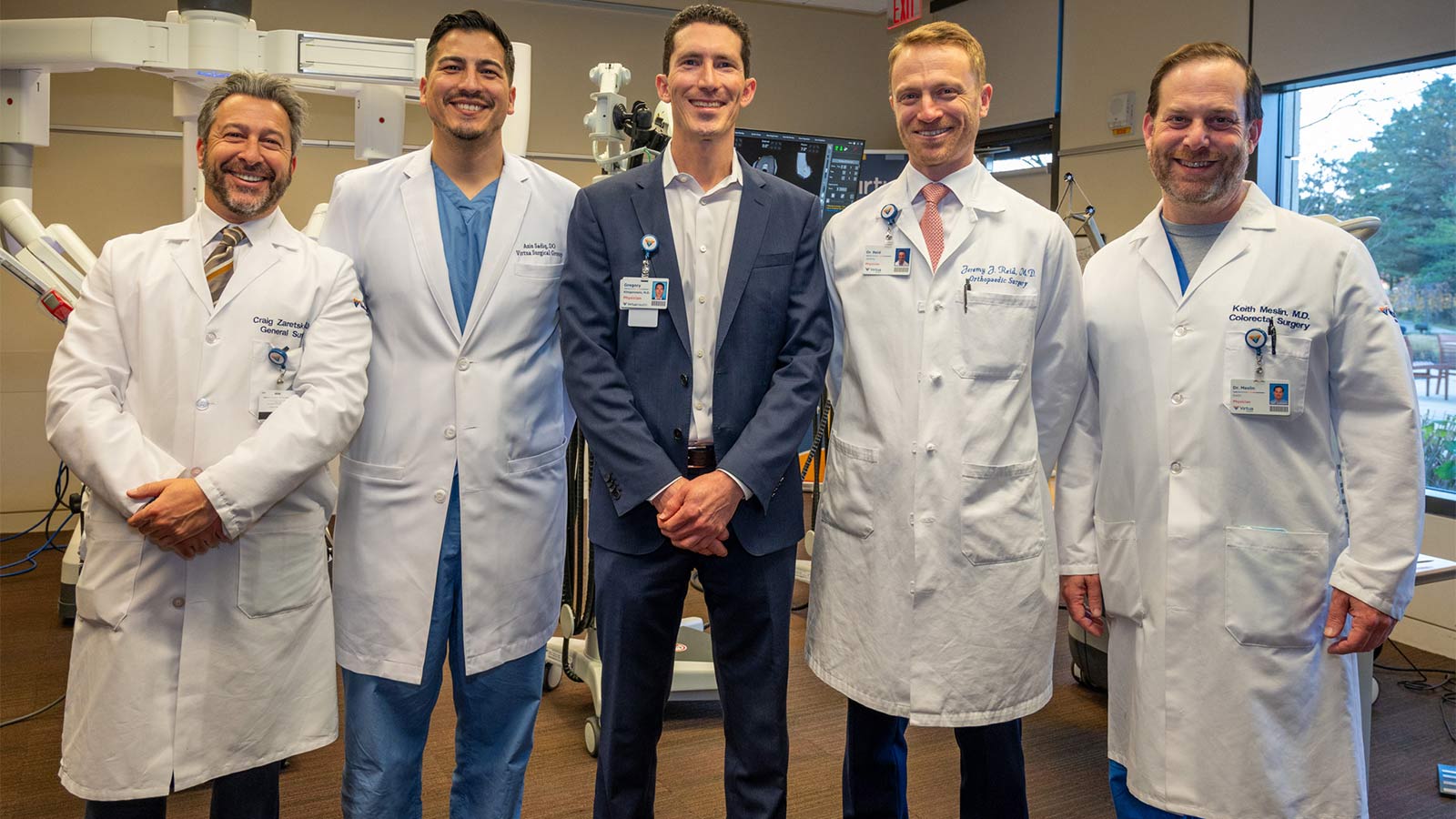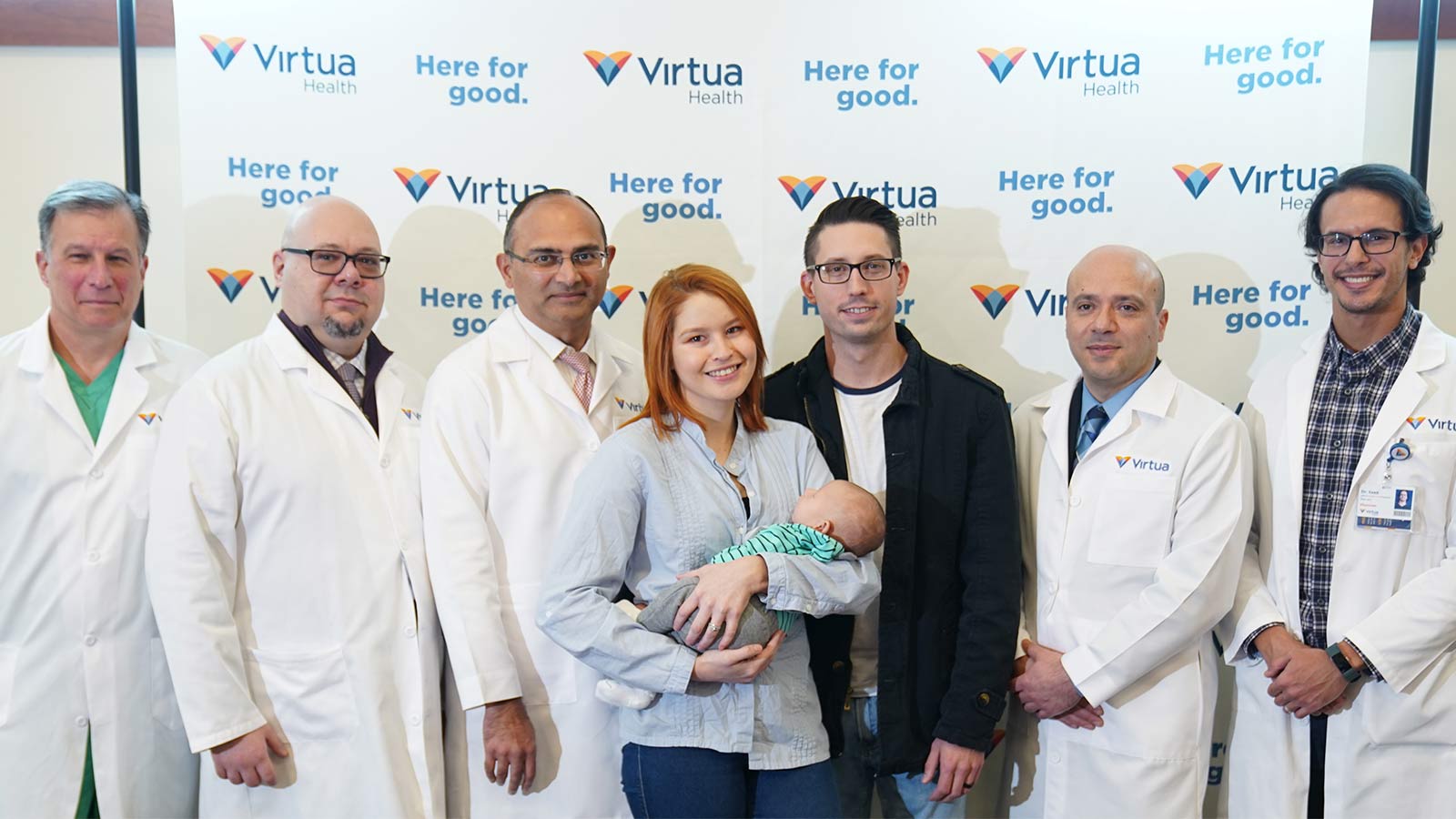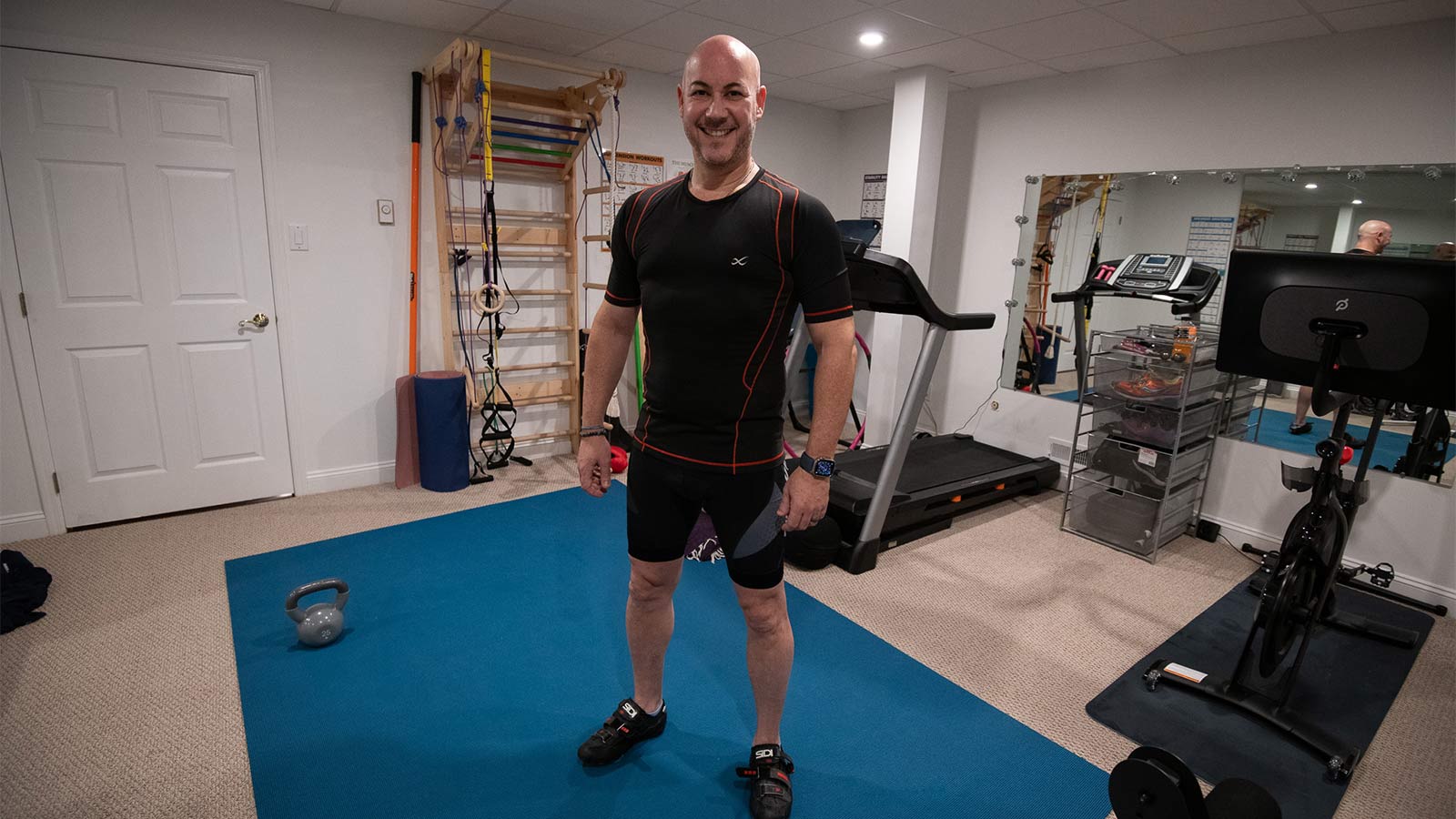What to Expect From a Robotic Hysterectomy
If you have chronic pelvic pain and heavy bleeding, you may find relief from a robotic hysterectomy, which offers a shorter recovery, less pain, and a lower risk of complications.

By Geoffrey Bowers, MD, Virtua Gynecologist/Robotic Surgeon, Virtua Minimally Invasive Gynecologic Surgery
If you're experiencing pain and heavy bleeding due to uterine fibroids or endometriosis, a hysterectomy (surgical removal of the uterus) might be your best option for relief. While the thought of surgery and a long recovery can feel overwhelming, advancements in robotic technology have made hysterectomies safer and less invasive.
What are the benefits of robotic hysterectomy?
Women who undergo single-incision robotic hysterectomies experience shorter recovery times, less discomfort, minimal need for pain medications, less blood loss, and minimal scarring. The risk of complications related to blood loss or infection is also low.
Understanding the “robot” in robotic hysterectomy
It's important to clarify that a robot doesn't perform the surgery on its own. It's a highly sophisticated extension of the surgeon's hands, allowing for incredible precision.
The system has multiple "wristed" robotic arms that hold surgical instruments. These arms move with greater dexterity than the human hand, rotating 360 degrees. A tiny 3D, high-definition camera gives the surgeon a crystal-clear, up-close view of the surgical area on a screen. The surgeon stays in complete control, maneuvering the instruments from a console, using the real-time video as a guide.
How is a robotic hysterectomy performed?
The procedure begins with a small incision on the inside rim of the belly button. In most cases, the hysterectomy can be completed through this single incision. However, some cases may require three or four more small incisions in the abdomen for other surgical instruments.
After making the incision, the surgeon inserts the video camera and surgical tools using the robotic arms. Guided by the 3D video, the surgeon uses the robotic arms to detach the organs from the surrounding tissues.
A common question is how the uterus and other organs are removed through a one-inch incision. After detaching the uterus, it’s often removed through the vagina, which reduces the risk of complications associated with major abdominal surgery and minimizes trauma to internal tissues.
Robotic surgery can be used for total hysterectomies (removing the uterus and cervix), partial hysterectomies (removing only the uterus), and procedures to remove the ovaries and fallopian tubes. Single-incision robotic hysterectomies typically take between one-and-a-half to two-and-a-half hours, while surgeries requiring multiple incisions may take longer.
Recovery from a robotic hysterectomy
Most patients return home the same day after a two- to three-hour recovery period and regain mobility within one day of surgery. Many can drive and get back to light activities within a week and return to work after two weeks.
Although you may feel better quickly, full recovery takes four to six weeks. During this time, you should avoid inserting anything into the vagina or having sex to allow internal sutures to heal. You also should avoid heavy lifting for four to six weeks.
Comparing robotic, laparoscopic, and traditional hysterectomies
Robotic surgery is a game-changer compared to traditional open surgery, which involves a large incision and a longer hospital stay. It means less scarring and pain and a lower risk of complications. Laparoscopic surgery is another minimally invasive option, but the robotic system's enhanced dexterity and 3D visualization offer significant advantages.
Your next step is a conversation with your doctor
If you're considering a hysterectomy, talk to a robotic surgeon specializing in gynecologic surgery. They can assess your situation and decide if this approach is right for you. Don't hesitate to ask questions and express any concerns. You deserve to be informed and feel confident about your decision.
Virtua minimally invasive GYN surgeons are here for you
Virtua’s minimally invasive GYN surgeons offer innovative surgical solutions that help you return to your life and activities with minimal downtime. To schedule an appointment with a Virtua minimally invasive GYN surgeon, call 888-847-8823.
There's So Much More to Explore
Discover expert insights, inspiring stories, health tips, and more by exploring the content below!

From Restless to Restful: How Movement Improves Sleep

5 Simple Ways to Spring Clean Your Wellness Routine

What to Expect From a Robotic Hysterectomy

When You Need A Hysterectomy Know Your Options

9 Essential Reasons to Vaccinate Your Children

Take Control of Incontinence, Prolapse, and Other Pelvic Floor Disorders

How Can I Prevent Bone Loss and Osteoporosis?

What Should You Do if You Slip, Fall, and Hit Your Head?

How Do You Manage the Side Effects of Weight-Loss Medications?

Which Weight-Loss Option is Best for Me?

The Truth About Menopause, Weight Gain, and Belly Fat

Shedding Light on Lesser-Known Menopause Symptoms and Solutions

Debunking The Myths About Vaginal Dryness

Advanced Minimally Invasive GYN Surgery Puts You at the Center of Care

Your 10-Point Plan to Avoid Winter Weight Gain

7 Reasons Why You Want Your Surgeon to Be an Expert in Robotics

Colitis Symptoms Under Control, Jennifer Is ‘Living My Best Life’

Be Fast and Spot the Signs of Stroke

Surprising Symptoms May Signal Stroke In Women

Robotic Hernia Surgery Combines Innovative Techniques With Faster Recovery Times

The HPV Vaccine: A Powerful Shield Against Cervical Cancer

How Does Breast Density Affect Your Mammogram?

Menopause: New Insights Into the Power of Hormone Replacement Therapy

How to Prevent and Treat Urinary Tract Infections

One New Heart Valve Saves Two Lives in the Tritten Family

6 Numbers Key to Keeping Your Heart Healthy

Lung Screening, Robotic Technologies Get Pat Kicking Up Her Boots Again

Breast Cancer Diagnosis Inspires Catherine to Help Others

Five Mindfulness Tips That Can Help Heal Your Heart

How Do I Get Rid of This Back Pain for Good?

How the Unique Stages of a Womans Heart Affect Her Health

Sarah Wins Back Her Health After Crohn's Disease Diagnosis

Put Your Mammogram Appointment on the Top of Your To-Do List

A Breast Self-Exam Saved Kristen's Life

How Sex Keeps You Healthy as You Age

Protect Your Child From HPV and Related Cancers

Why IUDs Might Be The Most Effective Birth Control

5 Things You're Too Embarrassed to Tell Your OBGYN

4 Not-So-Crazy Questions to Ask Your Doctor

What to Know About Cervical Cancer Screenings

